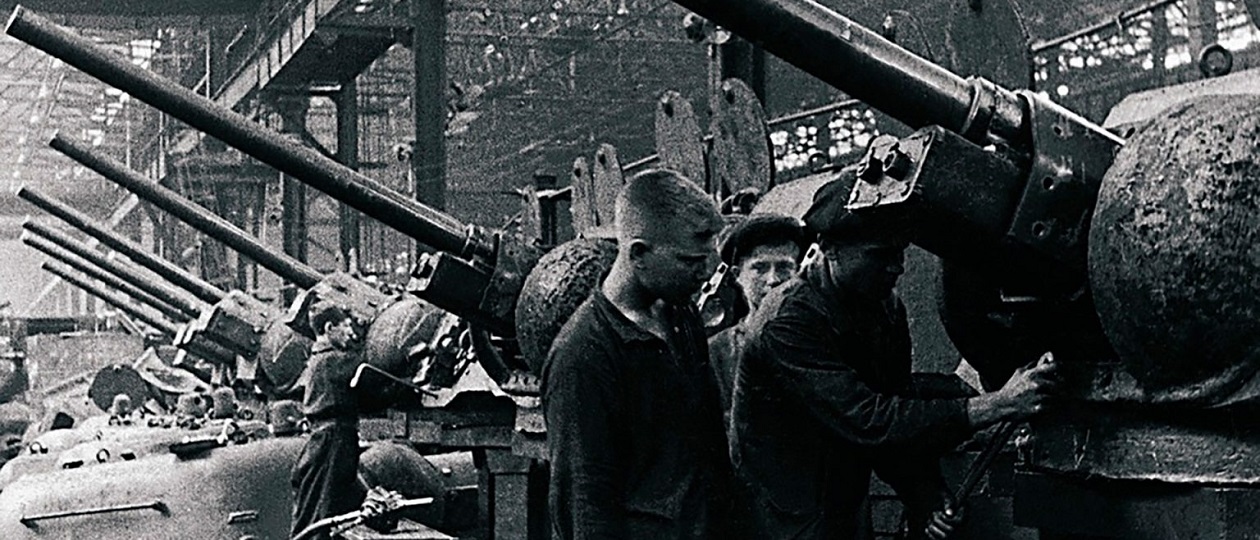
The Rapid Evacuation of Soviet Factories During WWII Was a Success — But Why?
It is known that with the beginning of the invasion of Germany and its allies into the territory of the USSR, the Soviet government carried out colossal work on the evacuation of industrial enterprises to the east and the emergency deployment of production in new places.
I had come across the opinion that this became possible due to the fact that the evacuation of enterprises in case of war was prepared in advance and the plants were taken out not to an open field, but to pre-prepared sites with communications. It is obvious to any sane person that it is physically impossible to deploy production “in an open field”.
The poured concrete has a period of time to gain design strength. Consequently, the evacuated enterprises were still located on some prepared sites. In this regard, the main question arises. What were these sites and where did they come from? I myself did not study the problem, and my interlocutors could not explain anything. However, today one of my counterparts (thanks to him for this) quoted one of the very serious documents. It did not in any way confirm the thesis that the evacuation of industry was prepared before the start of hostilities, but it allows us to come closer to understanding where the territories prepared in engineering terms came from in the USSR.
This document is resolution of the 18th Congress of the All-Union Communist Party (Bolsheviks), March 10-21, 1939, “The Third Five-Year Plan for the Development of the National Economy of the USSR (1938 -1942)” . Those who wish can read the full text themselves, I will cite the most interesting excerpts from it.
“The Congress believes that in the placement of new construction in the third five-year plan by regions of the USSR it is necessary to proceed from the proximity of industry to sources of raw materials and consumption areas in order to eliminate irrational and excessively long-distance transportation, as well as to further develop the previously economically backward regions of the USSR. In accordance with this, in the third five-year plan it is necessary.”
“To ensure proper control over the implementation of the decisions of the Central Committee of the All-Union Communist Party (Bolsheviks) and the Council of People’s Commissars of the USSR on the prohibition of the construction of new enterprises in Moscow and Leningrad, and also to extend this resolution to Kyiv, Kharkov, Rostov-on-Don, Gorky, Sverdlovsk, in which the construction of new enterprises is henceforth prohibited.
b) In such economic centers of the country as the eastern regions, the Urals and the Volga region, in the third five-year plan to create duplicate enterprises in a number of branches of mechanical engineering, oil refining and chemistry in order to eliminate accidents in the supply of some industrial products from unique enterprises.
c) Provide for a more rapid growth in the volume of capital works and the construction of new enterprises in the eastern and far eastern regions of the USSR. Continue to develop the metallurgical base in these regions in every possible way, for which purpose three quarters of the total number of blast furnaces should be built in the eastern regions of the country during the third five-year plan.”
Thus, the Congress of the All-Union Communist Party (Bolsheviks) sets completely reasonable and economically justified tasks for the development of the national economy of the USSR, which consist of:
- Bringing industry closer to sources of raw materials and consumption areas.
- Elimination of irrational and excessively long-distance transportation, which is ensured by the above-mentioned approximation. This also includes the creation of backup enterprises.
- Development of backward regions of the USSR, which is again ensured by the construction of industrial enterprises there.
- The Urals and the Volga region are named as the economic centers of the country, and an increase in the volume of capital works in the eastern and far eastern regions of the USSR is also envisaged.
It is obvious that based on the decision of the Congress, the plans of the third five-year plan (1938-1942) were adjusted and large-scale work began in the specified areas to prepare for the construction of new enterprises.
There were more than 2 years left before the start of the Great Patriotic War. During this period, a great deal could be done. More than a thousand enterprises were evacuated to the Urals, Siberia and the Volga region. Of these, approximately 60% were evacuated to the Urals. Thus, the geography of the placement of evacuated enterprises completely coincides with the territories in which the Congress decided to massively build new enterprises. In this regard, it can be concluded that the success of the deployment of production at evacuated enterprises was not only the merit of the People’s Commissariats of Transport and Industry, but was also due to the course of the previous development of the Soviet economy, and not at all to any advance preparations for a possible evacuation.





